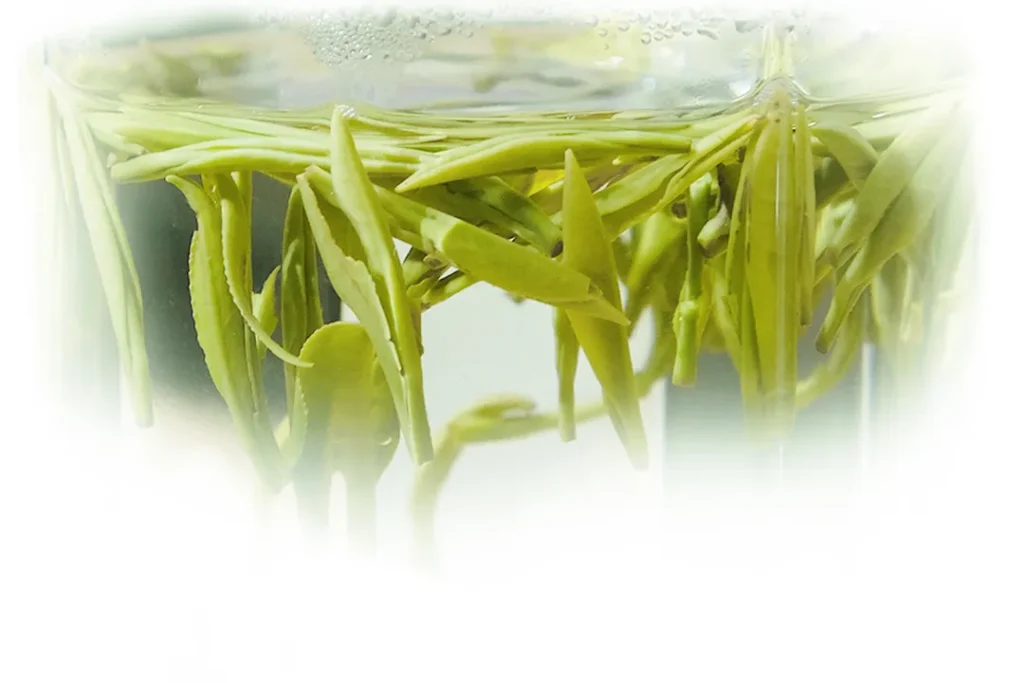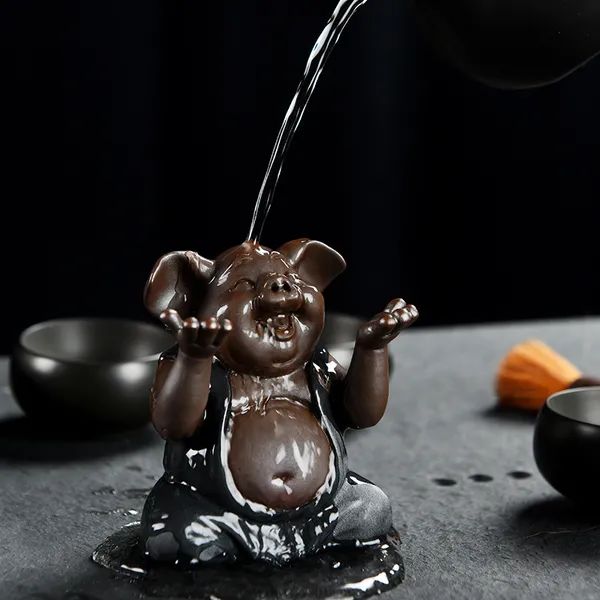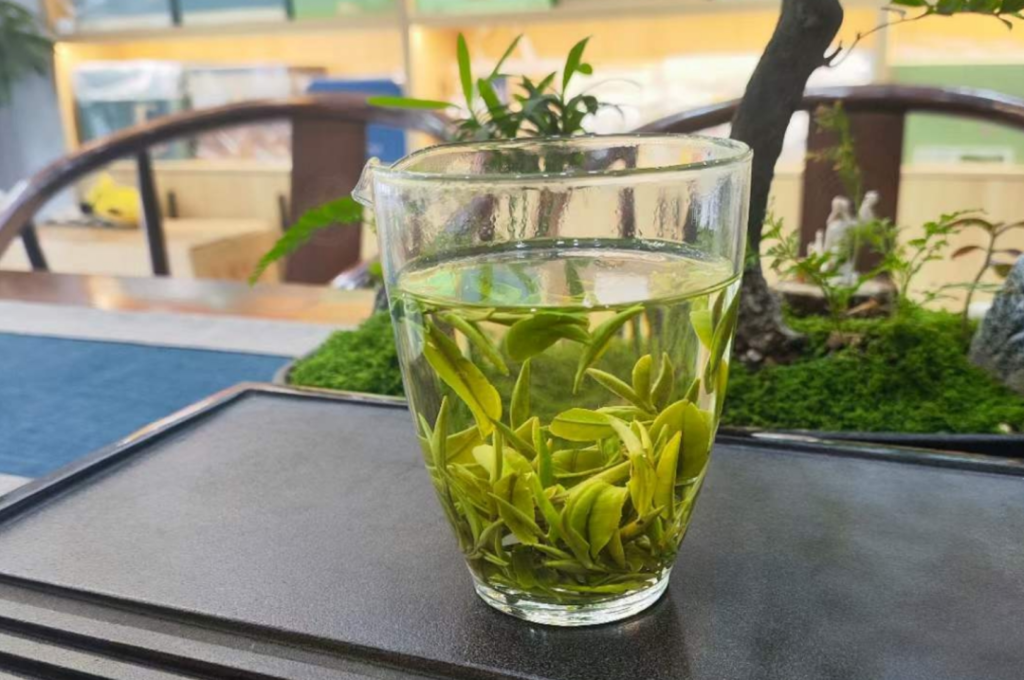Among the six major tea categories in China, which one is the most popular among the people, has the largest output, and the highest sales volume? Believe it or not, the answer is green tea. Green tea is not like Pu-erh tea from Yunnan or Wuyi rock tea in the oolong tea category, which often sparks extensive discussions among tea lovers due to the high prices of certain mountainous areas and small tea gardens all year round.
Nor is it like black tea, which has quietly entered the lives of many young people in recent years with the popularity of new tea drinks. Although seemingly low-key, green tea has consistently held the throne of the king of production and sales among the six major tea categories with an overwhelming advantage. In 2023, the national output of green tea reached 1.934 million tons, and the output value reached 206. 06 billion yuan. Whether in terms of output or output value, it is nearly four times that of black tea, which ranks second. Today, let’s have an in-depth chat with tea lovers about green tea, the most popular tea among the people. 1. What is Green Tea Among the six major tea categories, green tea is the earliest emerging tea category in Chinese history. The famous teas of the Tang Dynasty recorded by Lu Yu, the Sage of Tea, in “The Classic of Tea”, and the teas mentioned in the poems and articles of Song Dynasty literati such as Su Dongpo, Ouyang Xiu, Huang Tingjian, Emperor Huizong of Song, and Lu You are all green tea in terms of modern tea-making science. According to modern tea-making science, based on the different processing methods of tea leaves and the quality differences after processing, green tea belongs to non-fermented tea. The basic technological process consists of three key steps: fixing, rolling, and drying. As the tea category with the largest production and sales in China, green tea is produced in more than 20 tea-producing provinces (autonomous regions) across the country. No matter what the fixing method is or what the shape is after rolling, the dry tea of green tea produced everywhere is basically mainly in the green color system, either cyan, yellowish-green, or dark green… A partial view of “The Literary Gathering” by Emperor Huizong of Song shows the court tea party in the Song Dynasty 2. Classification of Green Tea There are numerous varieties of green tea in China, and there are also various ways to classify green tea. The most important way is to distinguish according to the specific methods of the two major technological processes of fixing and drying: 1) According to different fixing methods, there are two types: heating fixing and hot steam fixing. Green tea fixed by heating is called “pan-fired green tea”, and green tea fixed by hot steam is called “steamed green tea”. 2) According to different drying methods, there are differences among pan-drying, oven-drying, and sun-drying. Green tea dried by pan-drying is called “pan-fired green tea”, green tea dried by oven-drying is called “oven-dried green tea”, and green tea dried by sun-drying is called “sun-dried green tea”. Most of the green tea in China is mainly pan-fired green tea with heating fixing and pan-drying as the drying method, such as the famous West Lake Longjing and Dongting Biluochun. The steamed green tea that was popular in the Tang and Song dynasties is now a niche in China’s green tea. The representative famous tea is “Enshi Yulu”. Japanese green tea still mainly consists of steamed green tea. Pan-fired green tea Oven-dried green tea can be divided into ordinary oven-dried green tea and delicate oven-dried green tea according to the tenderness of raw materials and the production process.Commonly, green teas that are pan-fired are not directly consumed but serve as the base for scented teas. Delicate pan-fired green teas include many renowned varieties such as ‘Huangshan Maofeng’, ‘Taiping Houkui’, ‘Shucheng Lantian’, ‘Jingting Lixue’, and so on.
When it comes to sun-dried green teas, the fresh tea leaves undergo fixing, rolling, and are then dried under the sun. Some well-known examples include Yunnan’s ‘Dian Qing Green Tea’, Shaanxi’s ‘Shaan Qing’, Guangxi’s ‘Gui Qing’, Sichuan’s ‘Chuan Qing’, and Guizhou’s ‘Qian Qing’. Additionally, among the six major types of tea, green tea is one of the most diverse in terms of appearance. Therefore, it can also be classified based on its shape into flat-shaped green tea, single bud-shaped green tea, straight-shaped green tea, curved-shaped green tea, spiral-shaped green tea, round pearl-shaped green tea, orchid-shaped green tea, flake-shaped green tea, bouquet-shaped green tea, and block-shaped green tea, among others. There are numerous representative famous teas in green tea, which is the oldest, most produced, and most widely distributed tea category in China. The following are some of the well-known teas that tea enthusiasts may have heard of, with many having elegant names: ‘West Lake Longjing’ and ‘Jingshan Tea’ from Hangzhou, Zhejiang; ‘Guzhu Zisun’ and ‘Anji Bai Cha’ from Huzhou, Zhejiang; ‘Huiming Tea’ from Jingning; ‘Dongting Biluochun’ from Suzhou, Jiangsu; ‘Yuhua Tea’ from Nanjing; ‘Yangxian Xue Ya’ from Yixing; ‘Taihu Cu Zhu’ from Wuxi; ‘Huangshan Maofeng’ and ‘Taiping Houkui’ from Huangshan, Anhui; ‘Lu’an Guapian’ from Lu’an, Anhui; ‘Jingting Lixue’ from Xuancheng, Anhui; ‘Shucheng Lantian’ from Shucheng, Anhui; ‘Mengding Ganlu’, ‘Mengding Shihua’, and ‘Wanchun Yinye’ from Ya’an, Sichuan; ‘Zhuye Qing’ from Mount Emei; ‘Qingcheng Xue Ya’ from Dujiangyan; ‘Enshi Yulu’ from Enshi, Hubei; ‘Wudang Dao Tea’ from Wudang Mountain, and so on. In the ‘Chinese Tea Classic’ edited by Academician Chen Zongmao and Researcher Yang Yajun, 153 types of famous green teas from all over the country are included, making it the most diverse category among the six types of tea in the book. To brew green tea well, since most green teas are made from single buds or tender shoots with one to three leaves, the water temperature can be slightly lower to avoid the release of too much bitter substances like polyphenols and caffeine, which can affect the taste and aesthetic of the tea soup. For most delicate green teas, a water temperature of 80-90°C can better showcase the fresh fragrance, sweetness, and refreshing taste of green tea. Porcelain or glass is recommended for brewing green tea. Using a porcelain lidded bowl, the tea-to-water ratio can be controlled between 1:50 and 1:20, which can be adjusted according to personal preference for the strength of the tea soup.For a 150-milliliter gaiwan, 3 – 5 grams of tea can be placed. Pour out the tea soup quickly within 5 – 10 seconds to experience the different flavor changes of each infusion. If using a glass or a thermos cup for brewing, since the soaking time is longer, the amount of tea can be less. Wu Yin, the chief editor, suggests that 1 – 2 grams of tea is enough. When brewing with a glass, in addition to putting the tea leaves first and then pouring water, you can also adopt the “top – down method” of filling the cup with water first and then putting the tea leaves.
Or use the “middle – down method”, that is, pour 1/3 or half of the water into the cup first, then put the tea leaves, and finally fill the cup with water. These two methods can better appreciate the beautiful tea leaves slowly unfolding in the water. How to Appreciate Green Tea We can appreciate the beauty of green tea comprehensively from the senses of vision, smell, and taste. As the tea category with the longest history in China, tea – makers have spent a lot of time thinking about making the appearance of green tea beautiful. Tea – makers from different places produce green teas of various shapes through rolling and shaping, presenting different visual aesthetics to tea lovers. For example, the flat West Lake Longjing, the spiral – shaped Biluochun and Mengding Ganlu, and the straight – as – pine – needle Yuhua Tea and Yangxian Xueya. Different – shaped green teas slowly unfold after being infused with water, as if regaining the vitality when they were just picked. The tea leaves float and sink in the water, like a water ballet. Appreciating the fine hairs on the tea leaves in the tea soup through the light is like the misty rain in the south of the Yangtze River. In terms of aroma, most green teas made from delicate fresh leaves have a faint, delicate fragrance and a stir – fried bean fragrance. Among the high – grade ones, there is also a subtle orchid fragrance and flower fragrance, which is refreshing. For example, the authentic West Lake Longjing. In terms of taste, when brewed properly, the tea soup of green tea is sweet, the taste is fresh and brisk, and the aftertaste and saliva – producing effect last for a long time, leaving a fragrant taste in the mouth. Who is Suitable for Drinking Green Tea From the perspective of traditional medicine, green tea is relatively cold in nature, bitter, sweet, and cool in taste, and can enter the heart, lung, and stomach meridians. It can help us clear away heat and relieve summer heat, promote the production of body fluids and quench thirst, calm the mind and relieve restlessness, and clear the head. Friends who are prone to getting angry, having acne, and like to eat spicy hot pot and have some barbecues in the evening are advised to drink some green tea appropriately for a while after breakfast and lunch. Unfermented green tea is cool in nature and can clear away heat. For friends with a relatively hot constitution, strong stomach fire, or those who often like spicy food, green tea may help you clear away heat and reduce fire to a certain extent, making your body more comfortable. For smokers, green tea is also your good friend. Green tea contains organic acids and caffeine. Drinking green tea can reduce the harm of smoking to the lungs and lower the probability of lung cancer, making your lungs healthier. However, although green tea has many benefits, it is not suitable for everyone.


